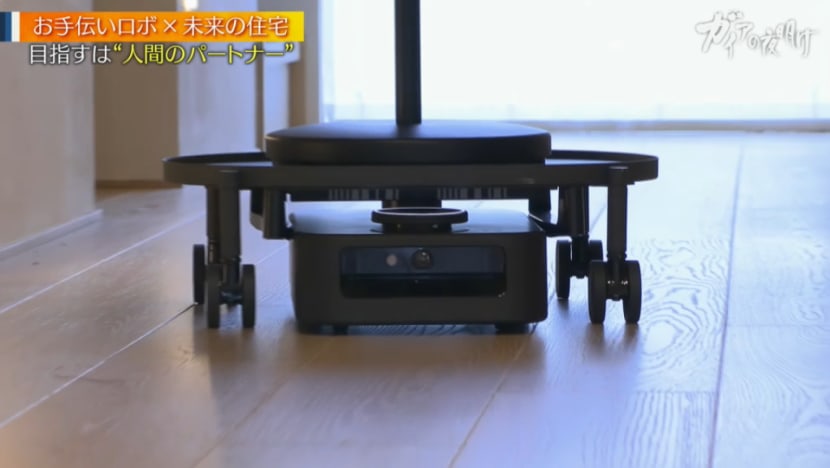Gaia Series 30: "Helping Robots", A Partner For A New Era
The transformative power of artificial intelligence is featured, with the focus on a household robot called Kachaka, which has progressed from delivering food to enhancing the lives of individuals.

This week, we focus on how artificial intelligence (AI) has contributed to Smart Homes and also empowered lives. We first take a look at a household robot called Kachaka, which is equipped with the latest AI technology. It continues to evolve and acquire new functions and has helped to alleviate some of the issues Japan is facing. These include a shortage of manpower and harsh working environments. It even plays a role in helping to discipline kids and becoming a companion for the elderly.
Kachaka was invented by Preferred Robotics. It was founded in 2021 and has nearly 40 staff. It boasts the top elite researchers from the best engineering schools like Kyoto University. Mr Kazuto Murase is in charge of the programming and functionality of Kachaka. It was created with the initial aim of helping to deliver food, ensuring that nothing spills and it does not bump into other objects. To achieve this, there are two cameras in the front and the back of the robot. It also has several sensors which are normally used in self-driving cars. The company constantly improves Kachaka to add more functions so that it can adapt to various environments and conditions, while observing, learning and growing in its abilities.
The development of Kachaka has not been without challenges. Initial tests revealed issues such as the robot stopping on the edges of tatami mats. Mr Murase, who was determined to overcome obstacles, taught Kachaka to recognise the different styles and colours of tatami mat edgings. The learning process continued, as Kachaka was equipped to create a map of its surroundings, ensuring it could navigate efficiently even when doors obstructed its path.
Preferred Robotics has collaborated with a research facility owned by Asahi Kasei Homes in Fuji City, Shizuoka, with the aim of transforming Kachaka into a key player in Smart Homes of the future. Their vision extended beyond mere object-carrying capabilities to making Kachaka a true partner for people in performing household chores.
Mr. Murase expanded Kachaka's functionalities by integrating a new conversational programme. Now capable of holding conversations, Kachaka became more than just a helpful assistant. It has also proved to be useful in the eldercare sector. By 2040, it is expected that there will be a shortage of 690,000 workers in the nursing care industry. Its potential was showcased in a care home for the elderly, called As Heim Nerima Gardens. The facility is managed by As Partners, which runs 46 care facilities across the Kanto region. The facility wanted to use Kachaka to ease the burden of carrying heavy loads of the staff, who also have to prepare meals, clean rooms and change sheets and towels. It is also Mr Murase’s mission to make the burden of care staff working in tough workplaces lighter. The maximum weight Kachaka can carry is 20kg.
Beyond Japan, the impact of AI has been seen in Europe too, with initiatives like the STIMO Project. It aims to help people paralysed from spinal cord injuries to move once again. It is spearheaded by Lausanne University Hospital’s Dr Jocelyne Bloch and Professor Gregoire Courtine from the Swiss Federal Institute of Technology. A person who has benefited from this initiative is Michel Roccati from Turin, Italy. He was paralysed due to a spinal cord injury following a motorbike accident. He signed up with the STIMO Project and experienced a miraculous recovery. The team had developed a special type of electrode system linked to a computer, allowing patients with spinal cord injuries to regain movement through AI-controlled electrical signals. The success of the project hinted at AI's potential in revolutionising medical devices.
Back in Tokyo's Setagaya Ward, the story took a personal turn for Shinya Hoshiba, who has been in a wheelchair since the age of four. Preferred Robotics’ Kachaka entered Mr Hoshiba's life, evolving over time to become more than just a helpful assistant. With speaking functionality added, Kachaka not only assisted with daily tasks but also provided companionship to Mr Hoshiba, showcasing the transformative power of AI in enhancing the lives of individuals with disabilities.
Tips:
1) AI-powered robot Kachaka can help in disciplining and teaching children
2) AI can play a key role in the next generation of medical devices.












